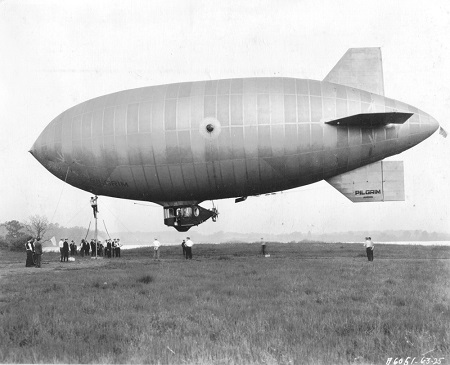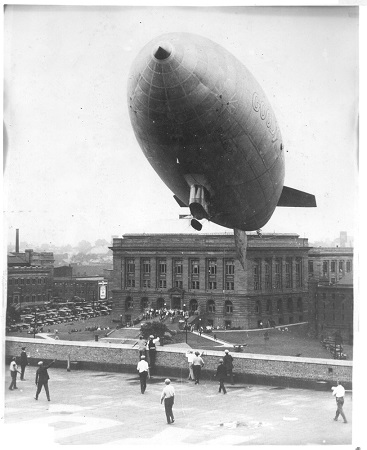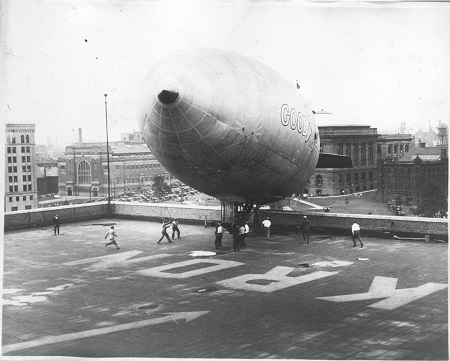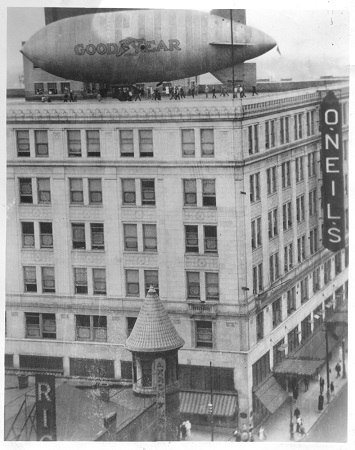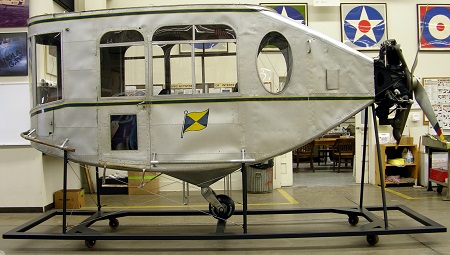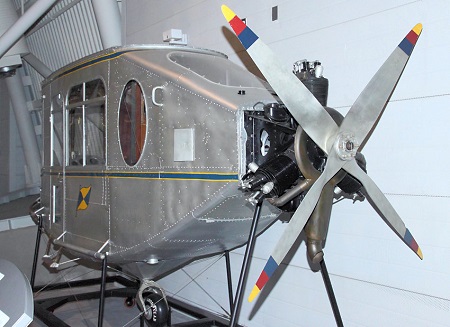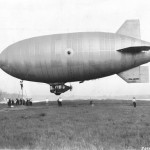 After having experimented with a series of small Pony blimps in the early 1920’s, The Goodyear Tire and Rubber Company of Akron, Ohio designed the first blimp to be inflated with helium. The Pilgrim was completed on May 25, 1925 and made first flight on June 3. For the first flights the blimp was inflated with hydrogen. After six weeks, on July 18, the Pilgrim was inflated with helium and was christened by the wife of Goodyear president, P. W. Litchfield.
After having experimented with a series of small Pony blimps in the early 1920’s, The Goodyear Tire and Rubber Company of Akron, Ohio designed the first blimp to be inflated with helium. The Pilgrim was completed on May 25, 1925 and made first flight on June 3. For the first flights the blimp was inflated with hydrogen. After six weeks, on July 18, the Pilgrim was inflated with helium and was christened by the wife of Goodyear president, P. W. Litchfield.
The Pilgrim had a magnesium-coated steel-tube framework. The envelope was made of 2-ply, rubberized fabric coated with aluminum. The envelope initially had a 47,400 cu. ft (1,340 m3) capacity. It was later replaced by a 55,000 cu. ft. (1,1560 m3) envelope.
It was powered by a single 3- cylinder Lawrence air-cooled engine with a 4-bladed Reed push propeller. A 40 gallon fuel tank gave it a 525 mile range (at 40 mph, 60 km/h). At half speed it had an endurance of 13 hours. The gondola could seat 1 pilot and 2 passengers. The payload was 921 lb (417 kg).
The Pilgrim last flew on December 10, 1931. In 4,765 flights it carried 5,355 passengers, logged 2880 hrs, and flew 94,974 mi (152,845 km.). It was dismantled in 1932.
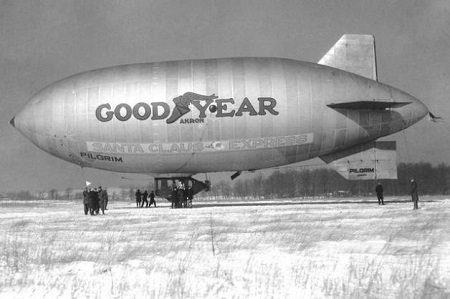
Goodyear’s Pilgrim, built in 1925, was the first commercial non-rigid airship flown using helium and Goodyear’s first promotional blimp. Here it is made up as the Santa Claus Express circa 1927.

Goodyear’s Pilgrim is shown with a belly mooring, an experimental portable mast developed in 1930 to enable cross-country operations independent of permanent hangars.

Goodyear’s original Akron-based blimp fleet launched from Wingfoot Lake on Nov. 4, 1930, and flew in formation over Akron and the Goodyear Airdock. The aerial blimp parade included the Pilgrim, Neponset, Vigilant, Mayflower, Defender and Puritan.
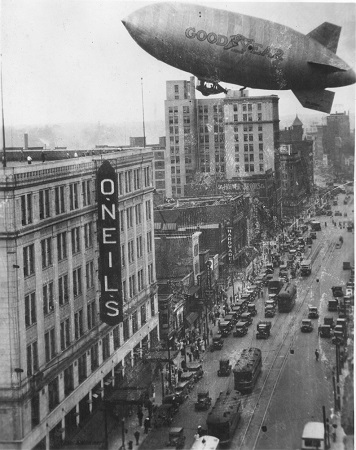
The Pilgrim approaches the O’Neil’s Department Store building in downtown Akron as part of a promotional flight.

